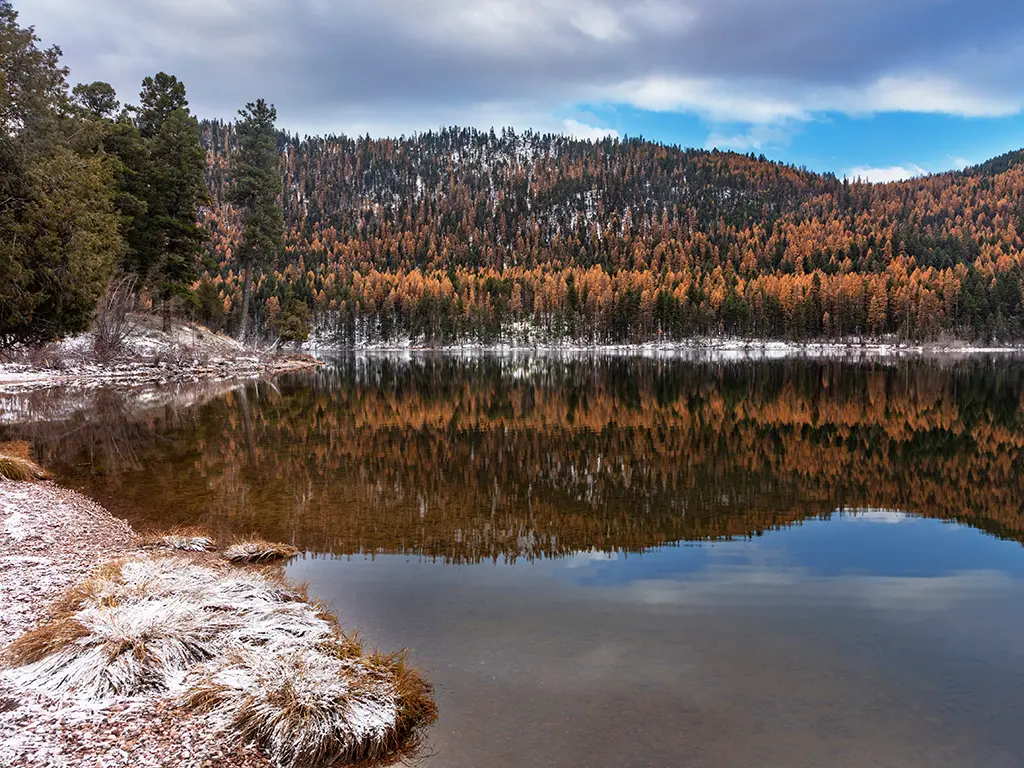Recently the US Forest Service approved the Sawmill-Petty project in Montana’s Lolo National Forest despite major concerns that their actions will harm threatened grizzly bears, bull trout and other species such as wolverine by logging and expanding the sprawling road system in the area.
The Sawmill-Petty Project would include commercial timber harvesting, thinning, slashing, and prescribed burning within a 16,879-acre area west of Missoula. We’ve been working with partners to propose alternative ways the Forest Service could better manage the area but the final plan still threatens the water, the wildlife, and the ecological integrity of the forest as a whole. Not only that, it sets a bad precedent in that some of the areas proposed for commercial harvesting exceed the National Forest Management Act limits on the number of acres opened by clearcuts. The project also likely violates the Roadless Area Conservation Rule and the Clean Water Act.
WildEarth Guardians has invested several years in better understanding the science and ecological impacts of the Sawmill-Petty proposal, and in recent media coverage, we had this to say about the final Forest Service decision:
“We appreciate that the Forest Service heeded some of our concerns, including dropping commercial logging operations within the Garden Point Roadless Area but the project remains fundamentally flawed as it will vastly increase the road system, hindering grizzly bear recovery in the region, and effectively clear cut more than 1,300 acres under the guise of reducing wildfire risks.”
The top concerns that remain with this project include:
- There are still too many miles of roads that would be built in places where roads have previously been decommissioned or where constructing new roads would disturb the land, water, and wildlife. Despite the Forest Service removing a few miles from the project, more than 100 miles of roads will be added to the official transportation system. This falls far short of the agency’s duty to ensure the road system provides for the protection of Forest Service lands, reflects long-term funding expectations, and limits adverse impacts.
- The agency asserts that logging, including clear cuts, far from people’s homes will somehow provide protection from wildfires, though best available science indicates that weather and climate change patterns have the greatest impact on where and how wildfires burn. Given that fire activity is increasing, and in light of effects from climate change, the Forest Service should consider approaches that truly restore forests such as removing roads, improving soils, and stabilizing streambanks.
- The project will have considerable impacts on wildlife, and especially habitat for grizzlies, bull trout and wolverines. Increased human use on new and existing roads, including legal use during project implementation and illegal public use after project implementation, creates the potential for increased mortality and poaching of grizzly bears. For these reasons, roads and human activity can negatively impact grizzly bears.
The Sawmill-Petty project area is directly across the Clark Fork River from the Ninemile Demographic Connectivity Area (DCA), where female grizzlies with dependent cubs have been seen since at least 2013. The Forest Service must recognize that habitat connectivity, which is crucial for grizzly bear recovery, extends beyond the official DCA and into the Sawmill-Petty project area. Increasing roads and motorized disturbance will only reduce the ability of grizzly bears to traverse the landscape as they search for new dens, food and mates.
The same holds true for wolverines. The project area contains “about 227 acres of predicted wolverine primary habitat” and “about 39,167 acres of predicted wolverine female dispersal habitat” within the project area. While the Forest Service finds that the project is unlikely to negatively impact wolverines, wolverines and particularly reproductive females may be sensitive to even low levels of human disturbances.
We could go on about the impacts this project will have on the Lolo, and we plan to do just that – keep you informed of what we learn and how together we can protect the forests from unnecessary impacts.
Make sure you are signed-up for our email alerts so we can share more as we know more. In the meantime, we will be doing all we can to protect roadless areas, water, and wildlife in our shared national forests.

Late autumn larch reflects into Salmon Lake in the Lolo National Forest, Montana, USA. Photo by Danita Delimont.